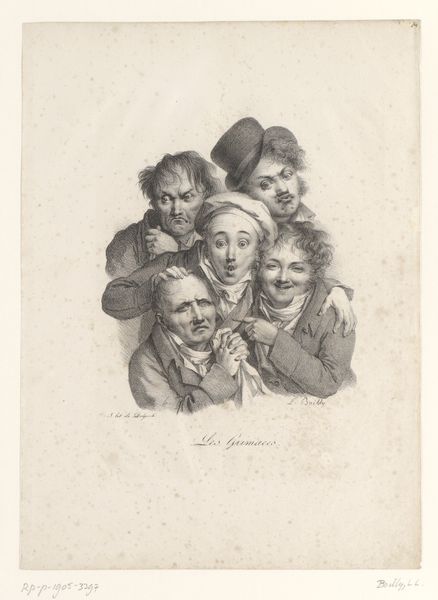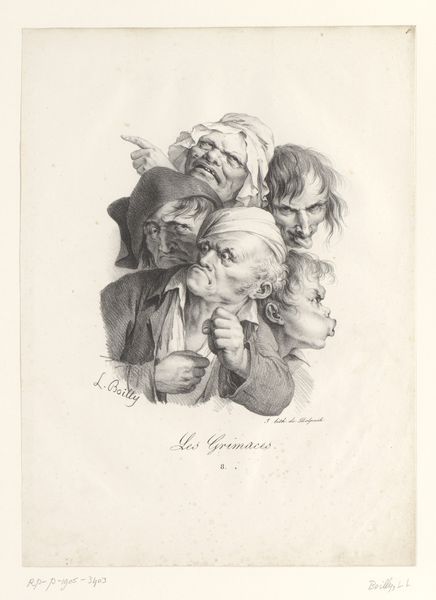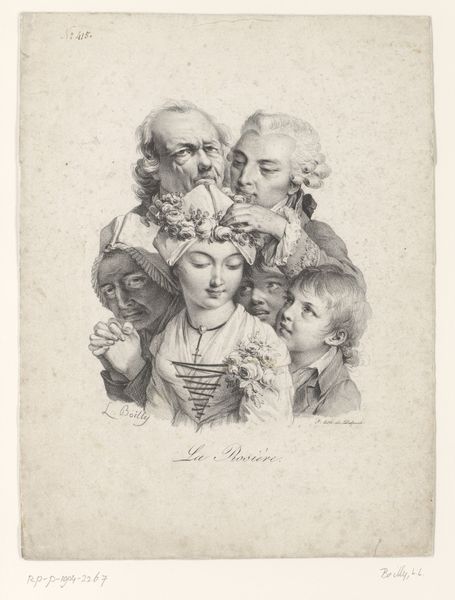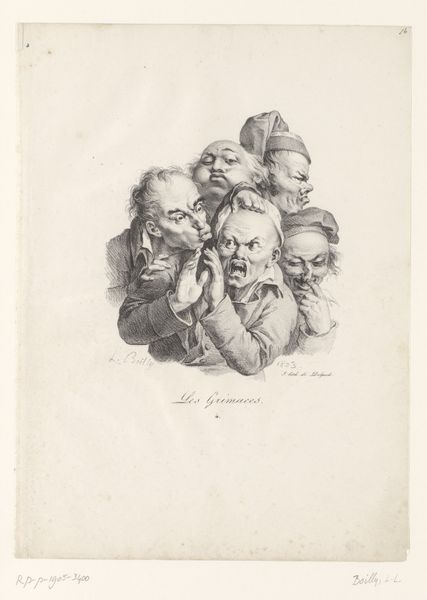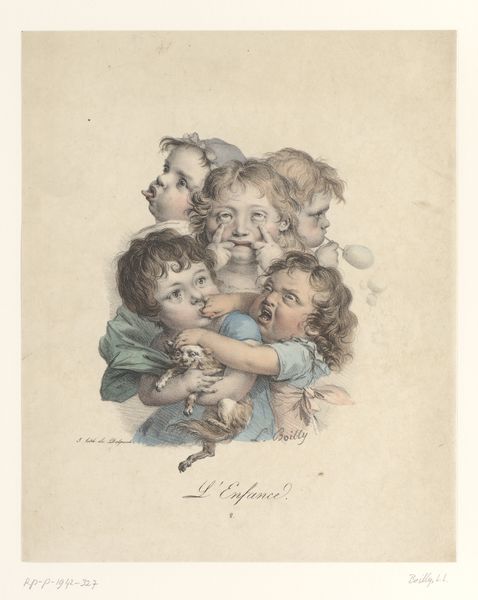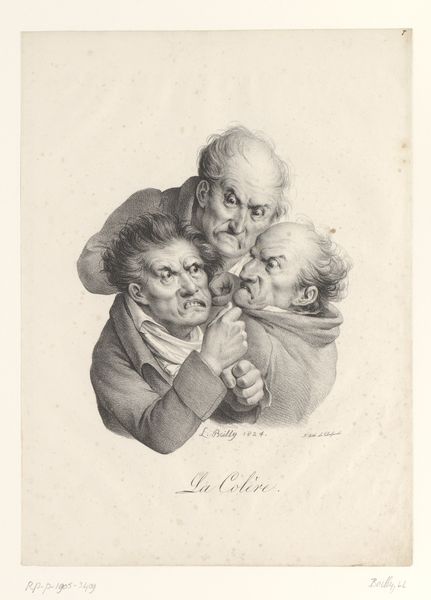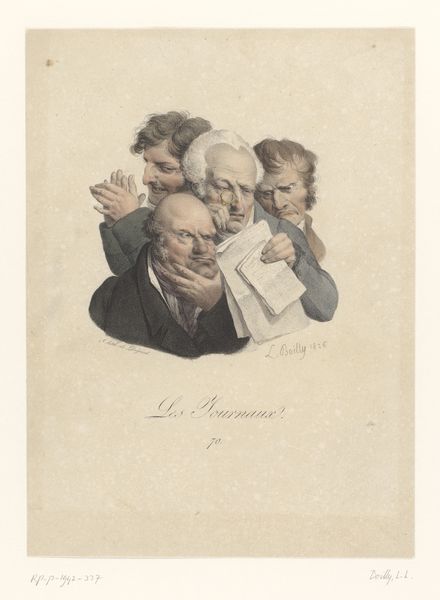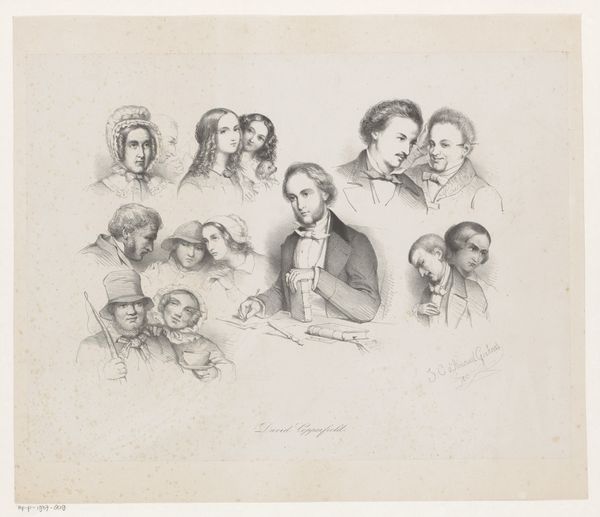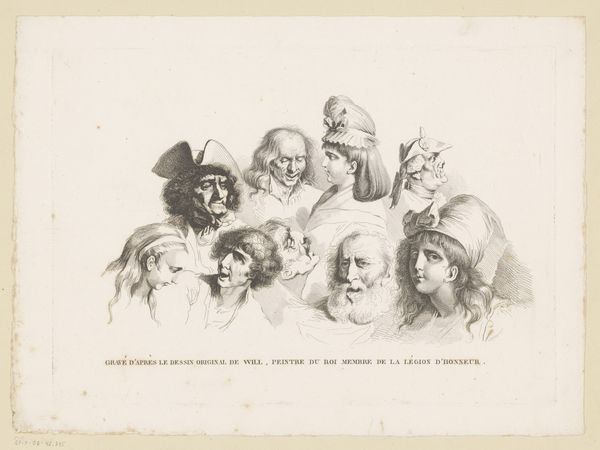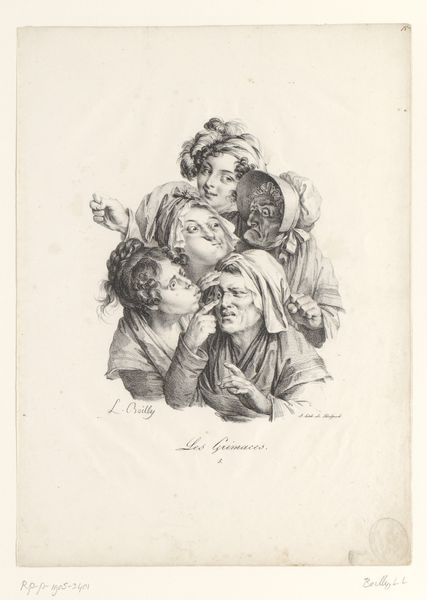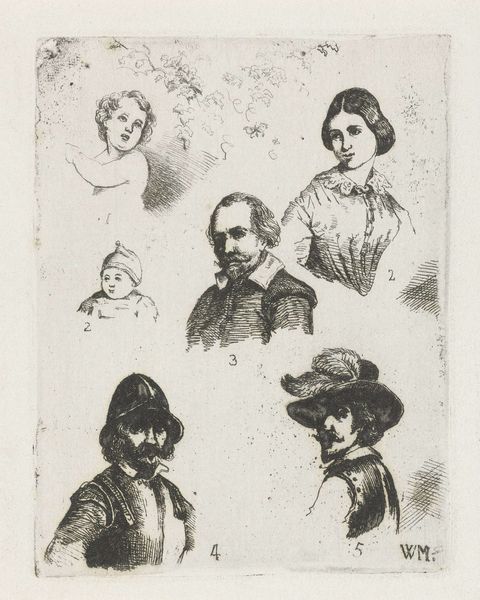
drawing, pen
#
portrait
#
pencil drawn
#
drawing
#
neoclacissism
#
caricature
#
pencil drawing
#
group-portraits
#
pen
Dimensions: height 367 mm, width 267 mm
Copyright: Rijks Museum: Open Domain
Curator: Before us, we have a caricature by Louis Léopold Boilly from 1827, aptly titled "Karikatuur van zes figuren met een grote, ronde neus"—"Caricature of Six Figures with Large, Round Noses." It’s rendered in pen and pencil, a delicate dance of lines creating something both comical and insightful. Editor: Insightful is one word for it. My immediate reaction is that it is bizarre! The sheer exaggeration of features—especially those noses—makes me almost recoil. The composition, though, is surprisingly balanced. It creates a striking pyramid. Curator: Indeed, the noses! They dominate, don’t they? But within the social context of early 19th-century France, such exaggerations were potent tools. Caricatures allowed artists like Boilly to subtly critique societal figures and norms, lampooning everything from social climbing to political corruption under the guise of humor. Editor: I can see the critique you suggest. Looking closely, notice the meticulous detail in the shading and cross-hatching; the gradations give surprising depth. What at first appears to be grotesque has considerable precision. I also notice the directionality, with the ensemble arranged around a central vanishing point near the work's literal, and thematic, point, with the ensemble arranged nose first. Curator: Precisely! Boilly wasn't merely making fun; he was observing. And who was he observing? It might also point to something much larger – France and, indeed, all of Europe at the cusp of modernity, poised to either laugh or scream, a response not entirely clear to many during his lifetime. The people become types. He sees a way to represent an era as a character. Editor: That adds layers to the composition and execution. One is forced to think, beyond the noses, to the expressions and textures around them. It does raise the stakes above simple visual punning. What appeared frivolous is deeply self-aware. Curator: Absolutely. Think about the rise of the bourgeoisie. New power structures created anxieties and insecurities; works such as Boilly’s allowed people to giggle, scoff, and release the tension born from such rapid social shifts. And perhaps also re-evaluate their own place, identity, and biases? Editor: This drawing made me uneasy. But thanks to this short breakdown, its formal tensions and its engagement with social realities come more clearly into focus. There's a lot more than the immediately humorous there. Curator: Exactly! It’s a work that encapsulates its time and raises questions of who does and does not possess the so-called refined qualities society reveres, a statement I believe has resonated even to our contemporary moment.
Comments
No comments
Be the first to comment and join the conversation on the ultimate creative platform.

